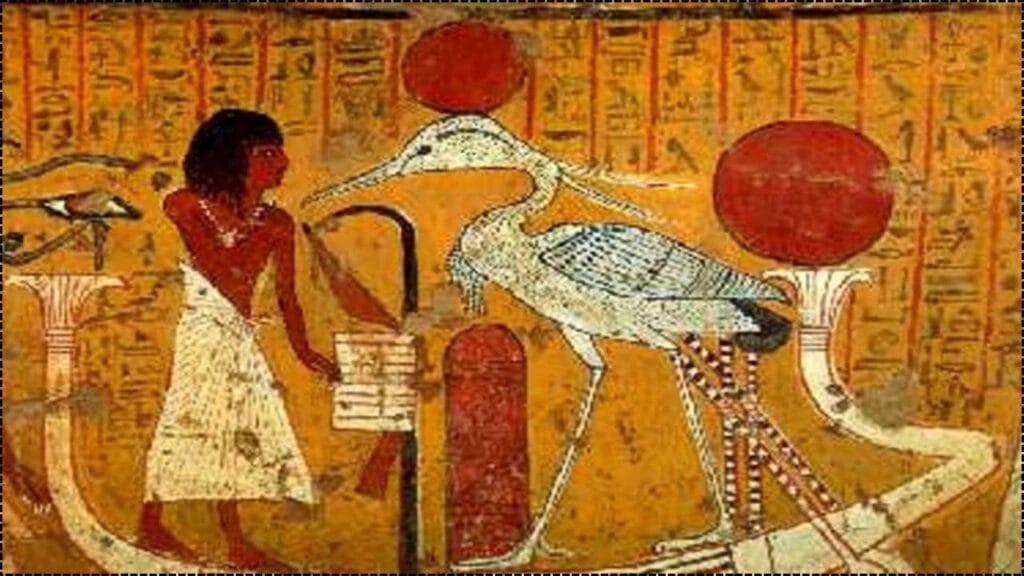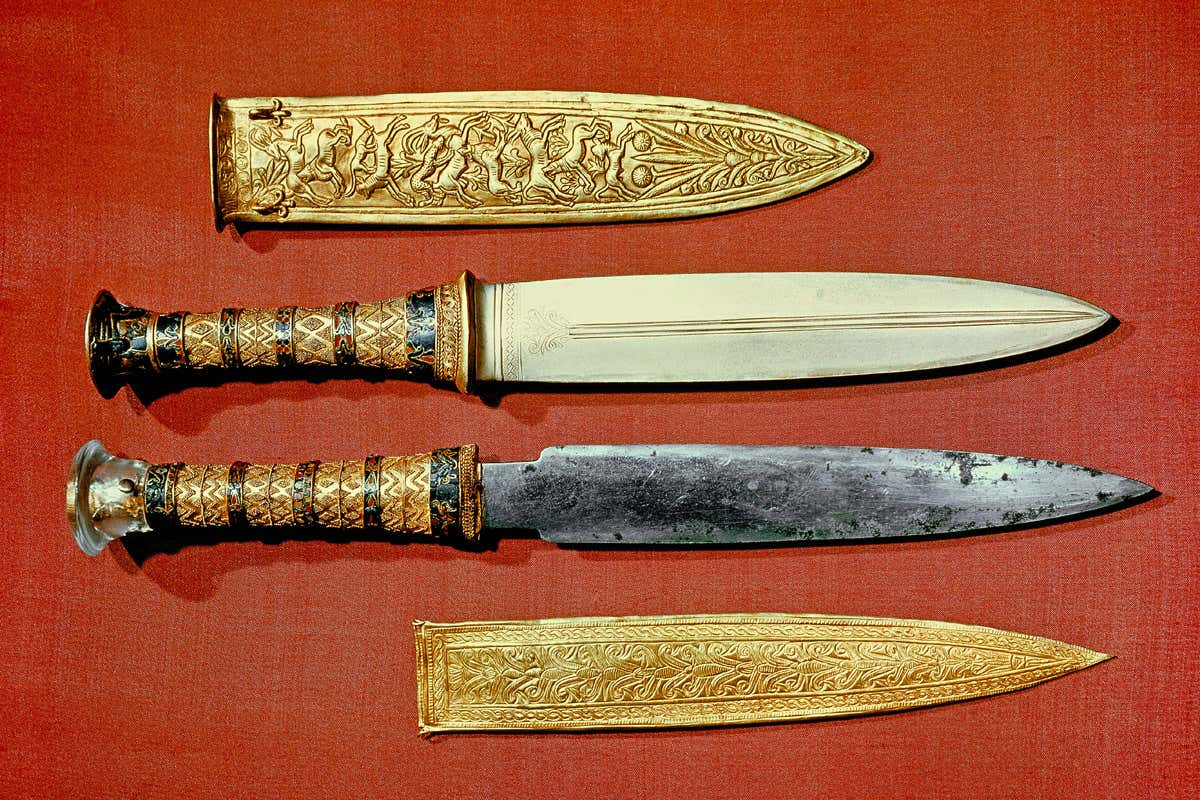Let’s be honest—our ancestors were deeply in tune with the cosmos, far more than we often realize. Long before modern dreams of Mars, ancient Egyptians were lovingly crafting royal treasures from actual meteorites with care and wonder. No exaggeration. These star-born creations reflect their heartfelt connection to the universe, reminding us all of humanity’s timeless awe and ingenuity in embracing the gifts of the skies.

When archaeologists gently opened King Tutankhamun’s tomb in 1922, they uncovered a mysterious iron dagger that captured hearts. The wonder? Ancient Egypt hadn’t yet mastered iron-smelting. So, where did this radiant blade come from? The stars, in a beautiful truth. Crafted from a meteorite with care, this treasure connects us to our ancestors’ awe and ingenuity, reminding us of humanity’s timeless bond with the cosmos.
Meteorites From the Gods
| Detail | Information |
|---|---|
| Artifact | Dagger made of meteoritic iron (~1330 BCE) |
| Owner | King Tutankhamun, Pharaoh of Egypt |
| Material Breakdown | ~10.8% nickel, ~0.58% cobalt – identical to known iron meteorites |
| Discovery | 1922 by Howard Carter, Valley of the Kings |
| Tested With | Portable X-ray fluorescence (XRF) – non-invasive element analysis |
| Belief System | “bjA n pt” – Iron from the sky – held divine status |
| Meteorite Origin | Likely Kharga meteorite field, west of Alexandria, Egypt |
| Ritual Use | Likely involved in burial rites like the Opening of the Mouth ceremony |
| Museum Home | Egyptian Museum, Cairo |
Tutankhamun’s meteoritic dagger is more than a fascinating relic—it’s a heartfelt cosmic message from 3,300 years ago. In an era when kings were revered as divine, stars whispered sacred stories, and iron fell from the heavens like a gentle blessing. This radiant blade reflects our ancestors’ deep curiosity, spiritual wonder, and boundless innovation—qualities that connect us across time, reminding us of our shared humanity and the timeless awe inspired by the cosmos.
So next time you wish upon a star, remember: someone might’ve already made a knife from one.

Imagine This: Sky Fire in the Desert
Imagine standing in ancient Egypt, gazing up at a starlit night, when suddenly the heavens part with a gentle glow. A radiant fireball dances across the sky, sparking wonder, before landing softly in the desert. With curiosity and courage, you journey for days to find this smoking, star-born stone—a treasure unlike anything you’ve ever held. This heartfelt moment connects you to the cosmos, weaving a timeless story of awe and humanity’s deep bond with the universe.
Now imagine shaping that into a blade for your king. That’s what “meteoric iron” meant: power, mystery, connection to the gods.
Breaking Down the Blade: Tutankhamun’s Meteoric Dagger
Not Just Any Iron
Tut’s dagger is older than Egypt’s Iron Age. No blast furnaces back then. The Egyptians didn’t make iron—they found it. That means the blade had to be carved from something rare… a meteorite.
Scientific Proof
In 2016, researchers scanned the blade using portable X-ray fluorescence spectrometry. Here’s what they found:
- 10.8% nickel
- 0.58% cobalt
- Trace gallium and germanium
This is textbook iron meteorite composition, matching iron-rich meteorites like those in Kharga, Egypt.
What Ancient Egyptians Believed About Space Metal
They weren’t just tech-savvy—they were deep. The word for meteoritic iron was “bjA n pt” — meaning “metal of heaven” or “sky iron.” It wasn’t just a resource. It was sacred. Tut’s dagger likely wasn’t for war. It was a status symbol, possibly used in:
- Burial rites
- Divine ceremonies
- Royal symbolism of cosmic favor
These objects reflected Egypt’s belief that pharaohs were descendants of the stars.
Meteoric Iron in Other Ancient Cultures
Tut’s dagger isn’t alone. Other cultures also rocked sky metal:
| Culture | Artifact | Date |
|---|---|---|
| Ancient Egypt | Gerzeh bead (meteoric iron) | ~3200 BCE |
| Inuit (Greenland) | Tools from Cape York meteorite | Pre-1800s |
| Bronze Age Switzerland | Mörigen arrowhead (Estonia-sourced meteorite) | ~900 BCE |
| Mesopotamia | Iron amulets and rings from meteoritic iron | ~3000 BCE |
These finds show early people valued meteorites as more than metal—they were spiritual objects, trade items, and power symbols.
How Meteorites Traveled — Early Trade and Diplomacy
Ancient Egypt wasn’t isolated. It traded with:
- Mitanni (modern Syria/Turkey)
- Nubia
- The Levant
Amarna letters (c. 1350 BCE) describe foreign rulers gifting iron daggers to pharaohs. Tut’s dagger may have been such a diplomatic gift—the Rolex of its day.
From Cosmic Rock to Ceremonial Blade — How It Was Made
Meteorites From the Gods (Ancient Style)
- Locate a meteorite: Usually via fireball sighting or legend.
- Chisel out metal fragments: Labor-intensive, cold hammering.
- Forge carefully: No smelting—just heating and shaping.
- Decorate for royalty: Gold handle, crystal sheath, fine inlay.
Even without modern tools, artisans turned raw sky iron into a work of power and art.
Related Links
Hubble’s Stunning New Galaxy Photo Packed with Baby Stars 64 Million Light-Years Away
Man Keeps ‘Gold Nugget’ for Years—Then Learns It’s a Priceless Meteorite from Outer Space
This Rare Metal Is Now More Precious Than Gold — Investors Are Taking Notice
Real Careers That Tie Into Meteoric Archaeology
Here’s where this gets practical. If you’re into ancient artifacts or modern metals, here are fields you can explore:
- Archaeometallurgist – Study ancient metal use
- Materials Scientist – Analyze metal content in labs
- Museum Curator – Display artifacts and educate
- Forensic Conservator – Protect ancient metals from corrosion
- Planetary Geologist – Classify meteorite samples
Pro Tip: Explore NASA’s Meteorite Database to learn classification methods.
Learn More from Trusted Resources
- Meteoritical Society
- Smithsonian Meteorite Collection
- NASA Solar System Exploration
- UNESCO World Heritage – Ancient Egypt
FAQs
Q: Could ancient Egyptians tell the iron was from space?
A: Not scientifically—but they knew it was special. Their word “iron of the sky” shows spiritual awareness of its origin.
Q: Is King Tut’s dagger the oldest meteoritic artifact?
A: Not the oldest. The Gerzeh bead (~3200 BCE) is older—but Tut’s dagger is the most iconic.
Q: Why didn’t it rust?
A: Meteoric iron has high nickel content, making it more resistant to corrosion than regular iron.
Q: Can I buy real meteoritic iron today?
A: Yes—but only from certified dealers. Some use it in jewelry or art. Just don’t expect a King Tut dagger.








